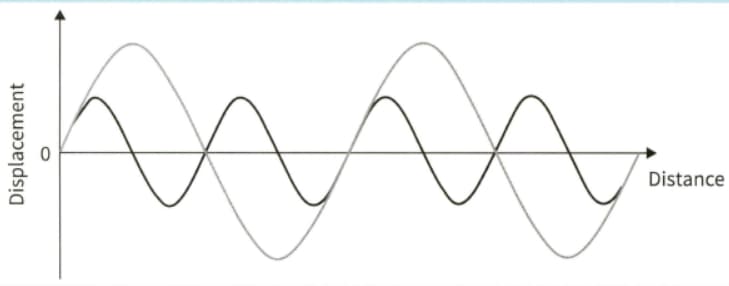A student is trying to make an accurate measurement of the wavelength of green light from a mercury lamp. The wavelength $\lambda$ of this light is . Using a double-slit of separation , the student can see clear bright fringes on a screen at a distance of from the slits. The student can measure their overall width to within
Using a ruler. The student then tries an alternative experiment using a diffraction grating with lines . The angle between the two second-order maxima can be measured to within .
(a) Determine the width of the fringes that the student can measure in the first experiment.

Important Questions on Superposition of Waves
A student is trying to make an accurate measurement of the wavelength of green light from a mercury lamp. The wavelength $\lambda$ of this light is . Using a double-slit of separation , the student can see clear bright fringes on a screen at a distance of from the slits. The student can measure their overall width to within
Using a ruler. The student then tries an alternative experiment using a diffraction grating with lines . The angle between the two second-order maxima can be measured to within .
(b) Determine the angle of the second-order maximum that the student can measure in the second experiment.
A student is trying to make an accurate measurement of the wavelength of green light from a mercury lamp. The wavelength $\lambda$ of this light is . Using a double-slit of separation , the student can see clear bright fringes on a screen at a distance of from the slits. The student can measure their overall width to within
Using a ruler. The student then tries an alternative experiment using a diffraction grating with lines . The angle between the two second-order maxima can be measured to within .
(c) Based on your answers to parts and , suggest which experiment you think will give the more accurate value of .
White light is incident normally on a diffraction grating with a slit-separation of . The visible spectrum has wavelengths between and .
(a) Calculate the angle between the red and violet ends of the first-order spectrum.
White light is incident normally on a diffraction grating with a slit-separation of . The visible spectrum has wavelengths between and .
(b) Explain why the second-and third-order spectra overlap.
Rays of light from two coherent sources produces constructive interference. Which of the following cannot be the phase difference between these two rays?
(A)
(B)
(C)
(D)
(a) Copy the waves shown in the diagram onto a sheet of graph paper and use the principle of superposition to sketch the resultant wave.

